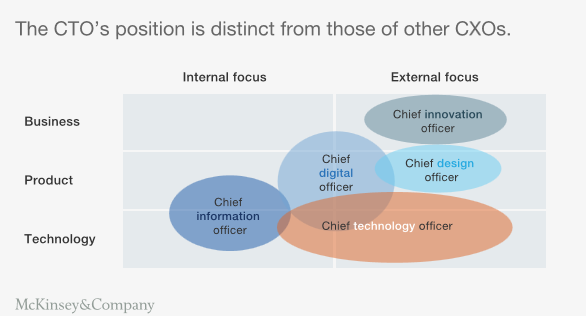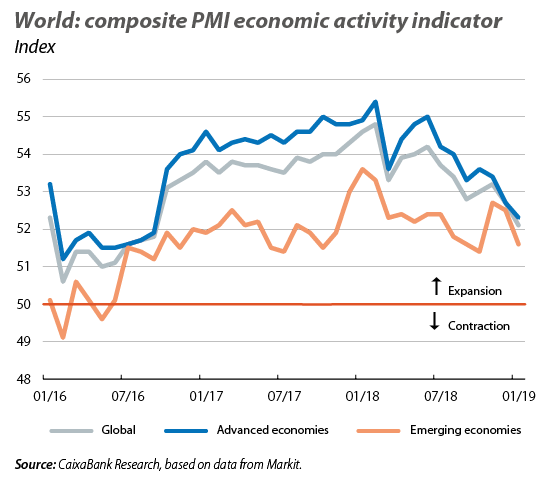Contents:

If a reporting entity determines that a facility was constructed for sale or rental, the accounting for indirect costs and ground lease rentals should be considered during the pre-acquisition and construction phases. The accounting for website development costs is dependent upon the current stage of development of the site. In the planning stage and once the website is complete, all costs are expensed as incurred; however, in the development stage of the website, guidance isn’t as clear.

In that case, fixed assets must be recorded according to GAAP standards and grouped into appropriate categories for the company’s business model. To gain the maximum benefit from your deductible startup expenses, you need to spend some thought on your tax strategy. You can claim $5,000 and amortize $20,000, or you can amortize the full amount. Money you spend to start your business that isn’t classed as GAAP startup costs gets a different treatment. You capitalize a startup cost if you’d capitalize the expense after your business was open. An example of a research expense is a fee paid to an engineering firm to discover new technology.
When to Capitalize Startup Costs
Publicly traded corporations have to release GAAP-compatible financial statements, but they also have to keep accounts that comply with tax laws. Private companies have the option to do all their accounting on tax principles rather than GAAP. Either way, it’s important to understand the differences and make clear to anyone reading your financial statements whether you’re using GAAP. You can classify and record costs any way you want as long as it’s for your own personal information. When you’re showing your financials to investors, lenders or auditors, though, it’s important you all speak in the same accounting language.

A company may inaccurately conclude that technological feasibility exists and begin capitalizing on expenses. The same can happen if they mistakenly fail to identify the software as technologically feasible. This Subtopic provides guidance on the financial reporting of start-up and organization costs. This Subtopic defines start-up activities and provides Examples to help entities determine which costs fall within the scope and outside the scope of this Subtopic. Once you decide to go ahead with your startup or acquisition, the rules change.
Although we strive to provide accurate general information, the information presented here is not a substitute for any kind of professional advice, and you should not rely solely on this information. Always consult a professional in the area for your particular needs and circumstances prior to making any professional, legal, financial, or tax-related decisions. An operating expense is an expenditure that doesn’t take away from the desired capability to operate and grow the company. Items like salaries and other costs generally fall under this category. If you run out of operating funds- it should negatively impact your ability to operate; without additional financing, you likely won’t be able to maintain operations and meet wage obligations (i.e., bankruptcy).
This can give them the breathing room they need to focus on building their company without worrying about making ends meet. AcSEC does not have the authority to provide further guidance on level-A topics, such as fixed asset and inventory accounting. To determine what kinds of costswhich seem like start-up costsmay actually be capitalized, CPAs must focus on other sources of GAAP. Acquisition of the property or of an option to acquire the property is probable . He historical cost of acquiring an asset includes the costs necessarily incurred to bring it to the condition and location necessary for its intended use. Another difference is if a taxpayer disposes of any Sec. 197 intangible before fully amortizing its cost, the taxpayer may not deduct a loss (Sec. 197).
Capitalize vs. Expense
Property taxes are a cost of owning the property and are not a direct incremental cost of construction, thus such amounts should be expensed as incurred. However, similar to ground lease expense, such amounts may be capitalized if the property is being constructed for sale or rental. General and administrative and overhead costs should be charged to expense as incurred, even if the costs are incurred by a third party on behalf of the reporting entity. These costs may be eligible for capitalization if the property is constructed for sale or rental. In certain circumstances, there may be depreciation costs directly related to the construction project, such as depreciation of equipment used to build a long-lived asset for internal use.
- For details regarding the accounting for asset retirement obligations refer to PPE 3.
- By amortizing the cost over five years, the net income of the business is smoothed out and expenses are more closely matched to revenues.
- The accounting for the costs for the CCA service itself is not specifically addressed in ASC 350‑40.
However, for tax purposes, things are potentially much trickier, with the various costs possibly falling into several categories that are treated differently. For some of the costs, a taxpayer may have a choice as to how the costs are treated. Thus, it is important to correctly account for startup costs to ensure that the costs are treated appropriately for tax purposes and in the manner that is most beneficial to the taxpayer. The regulations deem a corporation or partnership to have made this election (Regs. Secs. 1.
How do you calculate the initial cost of acquisition?
The costs of normal, recurring, or periodic repairs and maintenance activities and all other costs related to PP&E incurred during this stage should be expensed as incurred. In other words, costs during the in-service stage that extend the existing service potential of the long-lived asset or replace significant components of the long-lived asset should be capitalized. All other costs, including normal repairs and maintenance activities, should be expensed as incurred. The construction stage ends when long-lived assets are ready for their intended use. Long-lived assets are considered ready for their intended use when they are first capable of producing a unit of product that is saleable or usable internally by the reporting entity.
- If the option does not meet the definition of a derivative, the unissued PPE SOP indicates that the option should be carried at the lower of cost or fair value.
- Although that chapter does not give CPAs an all-inclusive list of the costs that should be capitalized as inventory, paragraph 5 does provide some guidance.
- The amount capitalized is limited to those amounts directly related to the site and project selected (e.g., costs related to evaluation of potential projects or locations should be expensed).
- Management expects the store renovations to attract new customers and result in a more than nominal increase in sales.
- Then, when the team undergoes the agile process, the plan can determine whether these criteria are being met, regardless of the phase that the project is in.
are startup costs capitalized or expensed for gaaps related to the incorporation, reorganisation, or amalgamation of a corporation (e.g. cost of affidavits, legal and accounting fees, costs of preparing articles of incorporation) are not deductible for income tax purposes . Organizational costs are expenses related to forming a corporation, partnership, or limited liability company . These may include legal, management, consulting, accounting and filing fees. You record them when you incur them in the expense category called “startup costs”. For example, if you’ve spent $23,000 preparing your new office and $25,000 on market research, you record $48,000 in startup costs.
If you keep your account books according to GAAP rules, you have to redo them when it’s time to file your tax return. U.S. tax law doesn’t follow GAAP, so GAAP startup costs and federal Section 195 startup costs are not the same. Aside from the GAAP startup expenses rules, there are practical advantages to distinguishing startup costs from operating expenses. Suppose that, after a year, you sit down and crunch numbers to measure your startup’s performance.
There also may be other methods of calculating amounts earned and related expense that are appropriate in the circumstances. The FERC Uniform System of Accounts, Electric Plant Instructions, 3.A and provides a framework for test power for utilities subject to its jurisdiction. In accordance with these requirements, the amount earned from sales that is credited to plant should equal the contractual amount, if applicable. The related expense is the incremental cost of producing and delivering the power.
For instance, a company can capitalize the expense incurred on a new transmission line for a delivery truck which will prolong its life by five years, but it cannot capitalize cost for a routine oil change. Companies can capitalize on expenses on sidewalks, signboards, and parking lots but cannot capitalize on the expense incurred on their routine maintenance. Other costs such as advertising, marketing, and research and development have to be expensed and cannot be capitalized as asset.. If you are unsure of the standards for capitalizing fixed assets, you’re not alone. It’s a complicated topic and there are many different ways businesses can handle it.
Essentially, the accounting for startup activities is to expense them as incurred. While the guidance is simple enough, the key issue is not to assume that other costs similar to start-up costs should be treated in the same way. Thus, you must review other elements of GAAP to find the proper treatment of other costs, such as customer acquisition costs, loan origination costs, research and development costs, and the cost of internally developed assets. In some cases, these other costs should be capitalized over a number of years. For accounting purposes, the COD is important because it is the date at which some types of costs are no longer considered capital costs . It is also the point at which the reporting entity begins to record depreciation expense and ceases capitalizing interest costs.
The Tax Adviser is available at a reduced subscription price to members of the Tax Section, which provides tools, technologies, and peer interaction to CPAs with tax practices. The Section keeps members up to date on tax legislative and regulatory developments. The current issue of The Tax Adviser and many other tax resources are available at thetaxadviser.com. Cash, cash equivalent, marketable securities and other liquid assets are current assets.
Partnership transaction costs present challenges – Grant Thornton
Partnership transaction costs present challenges.
Posted: Tue, 09 Jul 2019 07:00:00 GMT [source]
However, it’s important to separate organizational costs from costs that GAAP treats separately. Suppose you’re trying to improve or upgrade an existing product or facility as part of your business venture. This doesn’t count as a startup cost even if you do it before you open a new business. The intangible assets that startups hold can be worth more than their tangible ones. The value of intangible assets can be enormous for startups that are able to capitalize early in their development cycle. When a bank reviews a loan application from a startup, it will look at the company’s capitalized costs as one factor in making its decision.
Fixed assets such as plant, property, and equipment become less valuable as time passes. Buildings deteriorate, vehicles and equipment suffer wear and tear, and technology becomes obsolete. Under the Section 179 rules, you may be able to claim up to $1 million in equipment purchases as a business deduction. For example, if you buy $3,000 in computer equipment for business, that’s a $3,000 write-off. Under GAAP, you capitalize and depreciate the purchase, regardless of the tax treatment. While you can write off the transaction costs as an expense, you allocate the purchase price to the assets you’ve acquired and deduct it by depreciation rather than claiming an expense.
The accounting for the costs for the CCA service itself is not specifically addressed in ASC 350‑40. The reporting entity should account for these costs similar to costs for other service contracts, which are generally expensed as incurred or as the services are received. Payments made in advance of the CCA service being received should generally be recorded as a prepaid expense. Contributions should be expensed in the period made, unless the contribution is for the in-substance purchase of a good or service.
https://1investing.in/ to be capitalized include eligible costs incurred prior to the commercial operation date (see UP 12.2.5). Costs during the testing phase are part of the preparation of the plant for its intended use; therefore, the cost to generate test power should be incorporated as part of the initial measurement of the capitalized cost of the plant. Utilities and power companies may receive amounts known as contributions in aid of construction that are generally intended to defray all or a portion of the costs of building or extending existing facilities. CIAC is a permanent contribution and in practice, electric and gas utilities record CIAC received as a reduction of the cost basis of plant.

Capitalizing the development will let you match the costs of development incrementally with the sales of the product. This will keep your net income high, especially during the initial release of the product. Capitalization solves this problem by recording the expenses of an asset or process based on the corresponding period in which they’re used. This principle says that revenues should be matched with the costs that occurred during the same interval. It focuses on a cause-and-effect relationship, meaning that the sales cause the expenses to occur. The key to understanding why capitalizing benefits businesses is best explained by the matching principle.
It may also have to pay to ship the equipment to the location, purchase shipping insurance and waste some material in the beginning as part of trial runs. All of these purchases have been incurred on bringing the equipment/machine to a workable state; therefore, the company can capitalize all of them under GAAP. According to the Financial Accounting Standards Board, which lays down the rules for GAAP, assets are those purchases/expenses that have a possible future benefit. On the other hand, expenses require consuming assets, such as cash, to produce goods or deliver services. When a company makes a purchase, it can be challenging to determine whether to classify it as an asset or an expense. The company must have accurate GAAP accounting to have the correct balance sheet.